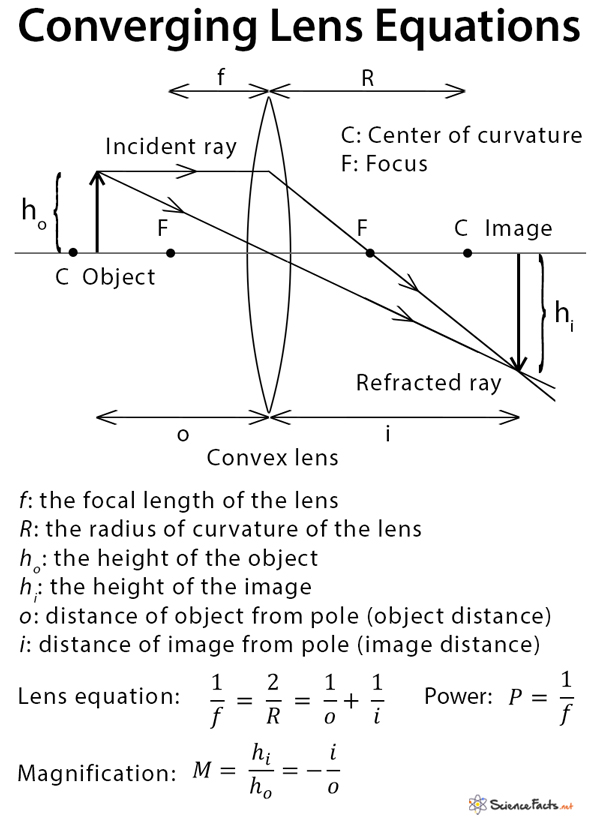5 Ways Converging Lens Works

The converging lens, a fundamental component in optics, has been a cornerstone in understanding how light behaves when passing through a curved piece of glass or plastic. Its ability to focus light rays to a single point makes it indispensable in a variety of applications, from simple magnifying glasses to complex optical instruments like microscopes and telescopes. Here, we delve into the mechanics and applications of converging lenses, exploring five distinct ways they function across different domains.
1. Image Formation in Cameras
One of the most ubiquitous applications of converging lenses is in camera systems. In a camera, a converging lens is used to focus light from the scene being photographed onto a light-sensitive surface, typically a digital sensor or film. The lens collects light rays from the object, converges them, and then focuses these rays onto the sensor, creating an image. The ability to adjust the focal length of the lens (through zooming or changing lenses) allows for the capture of images at various distances and with different compositions. This principle of focusing light to form an image is crucial for photography, enabling the creation of sharp, clear pictures of the world around us.
2. Magnification in Microscopes
Converging lenses are also pivotal in microscopy, where they are used to magnify small objects or samples that are otherwise invisible to the naked eye. In a compound microscope, two converging lenses are used in series: the objective lens and the eyepiece lens. The objective lens collects light from the sample and produces a magnified image, which is then further magnified by the eyepiece lens, resulting in a significantly enlarged view of the microscopic world. This dual lenses setup allows for high magnification and resolution, making it possible to study the microscopic details of specimens in biology, chemistry, and other sciences.
3. Correcting Vision in Eyeglasses
For individuals with refractive errors such as hyperopia (farsightedness), converging lenses play a crucial role in correcting vision. A converging lens in eyeglasses helps to converge light rays before they enter the eye, ensuring that the image is focused properly on the retina. This is particularly useful for people who have difficulty seeing objects up close, as the lens compensates for the eye’s inability to converge light correctly. By correcting the focal point of light entering the eye, converging lenses in eyeglasses enable clearer vision and improved daily functioning for millions of people worldwide.
4. Telescopic Observations
In astronomy, converging lenses are used in refracting telescopes to observe distant celestial objects like stars, planets, and galaxies. The telescope’s objective lens, typically a large converging lens, gathers light from these distant objects and focuses it into an image. This image is then magnified by an eyepiece lens, similar to a microscope, allowing observers to study celestial bodies in detail. The ability to collect and focus large amounts of light enables astronomers to study faint objects and phenomena that would be invisible to the naked eye, contributing significantly to our understanding of the universe.
5. Laser Beam Focusing
Converging lenses are also employed in the focusing of laser beams. In applications requiring a high concentration of laser energy, such as material processing (cutting, welding), spectroscopy, or in laser-induced breakdown spectroscopy (LIBS), a converging lens is used to focus the laser beam to a very small spot. This focusing increases the intensity of the laser at that point, enabling precise and efficient processing of materials or analysis of samples. The precise control over the focal length and spot size allows for tailored applications, from delicate surgeries to industrial manufacturing processes.
What is the primary function of a converging lens in optics?
+The primary function of a converging lens is to focus light rays to a single point, making it useful for image formation, magnification, and the concentration of light for various applications.
How do converging lenses correct vision in individuals with hyperopia?
+Converging lenses correct hyperopia by converging light rays before they enter the eye, ensuring that the image is focused properly on the retina, thus compensating for the eye's inability to converge light correctly.
What role do converging lenses play in astronomical telescopes?
+In astronomical telescopes, converging lenses are used to gather light from distant celestial objects and focus it into an image, which is then magnified for observation, allowing for the study of distant stars, planets, and galaxies.
In conclusion, the role of converging lenses extends far beyond the simple magnification of objects or correction of vision. They are critical components in a wide array of optical instruments and systems, facilitating our ability to observe, study, and interact with the world around us in profound ways. Whether in the realms of photography, microscopy, vision correction, astronomy, or laser technology, converging lenses demonstrate the power of optics to transform and enhance our understanding of the universe.



